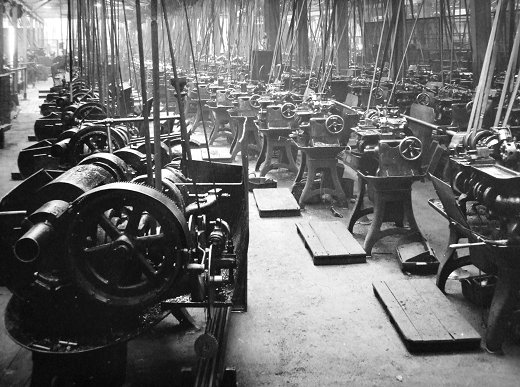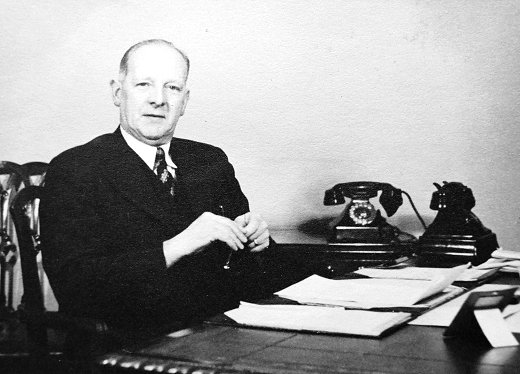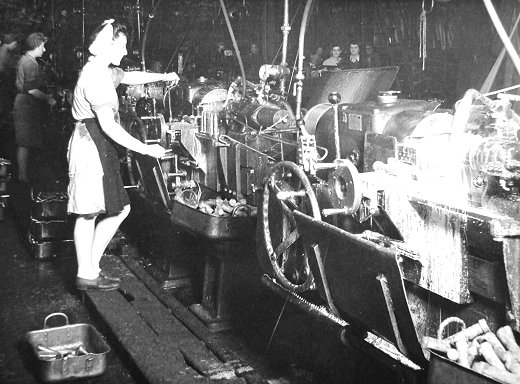| The following photographs, possibly from the 1930s
were kindly supplied by Darlaston historian Tony
Highfield. They were taken during the company's heyday,
when Imperial Works was supplying nuts, bolts,
fastenings, and tools to countries throughout the world,
and Darlaston was still the capital of the nut and bolt
industry. Charles Richards & Sons product range
included the following:
Black, bright, and cold-headed
bolts, nuts, studs, and set pins of all kinds.
Carriage bolts and nuts.
Permanent way railway fastenings.
Telegraph ironwork.
High tensile bolts and nuts.
Precision repetition work from 4BA to 2 inches in diameter.
Wheel studs and dome nuts.
Alloy steel stud bolts, studs and carbon steels, nuts
for the petroleum industry.
Washers, bright and black.
Straining eye bolts.
Rivets.
Stampings.
Bright-drawn steel.
Roofing and gutter bolts and nuts.
Foundation bolts.
Moorhouse patent lock nut.
Burston rapid action cam spanner.
Items could be galvanised or plated in all finishes.
The company had many representatives throughout the
UK, and in the following countries:
| South
Africa |
New Zealand |
| Kenya |
Egypt |
|
Tanganyika |
Ceylon |
| Uganda |
India |
|
Zanzibar |
Norway |
|
Rhodesia |
Sweden |
|
Nyasaland |
Finland |
|
Australia |
Denmark |
Bright mild steel studs were
produced up to 1¼ inches
diameter, Hexagon head bolts, and hexagon head set
screws were made up to 1 inch diameter, Hexagon huts
and locknuts were made up to 2 inches in diameter
(Whitworth thread), and square head coach bolts were
made up to ¾ inch diameter.
|
 |
A vast number of small
machines producing the smaller nuts and set
screws.
The noise must have
been deafening when the machines were running,
all from overhead line shafting, and an immense
array of belts. |
| A corner of the
packing department, overflowing with a large
number of Hessian bags, all filled to the brim
with nuts and bolts of all kinds.
Notice the scales for
weighing each bag, and also the array of
heaters, which would have been a necessity in
the cold winter months. |
 |
 |
A fine view of Heath
Road and Imperial Works from the 1930s.
It still looks much the
same today, although part of the factory is now
derelict, and so its future must be uncertain. |
| Charles Richards at
his desk. |
 |
 |
An example of
repetition work, turning what appears to be
round-head bolts before the thread is cut. |
| The corner of a
machine shop, possibly in the maintenance
department where parts and tools would be made
for the production machines. |
 |
 |
Large diameter
coils of steel are threaded into machines,
possibly to be cut and threaded for studs.
|
| Part of the factory
where long bolts are in production.
In the 1950s the company's
standard range was up to 9 inches in length, but
longer bolts could be made to order. |
 |

A fine display of some of the many
products made at the works.
| If you have any further information about
the photos, or the company, or have any photos
that we can add, please contact the
webmaster
who will be delighted to hear from you. |
 |
Return to
the
previous page |
|